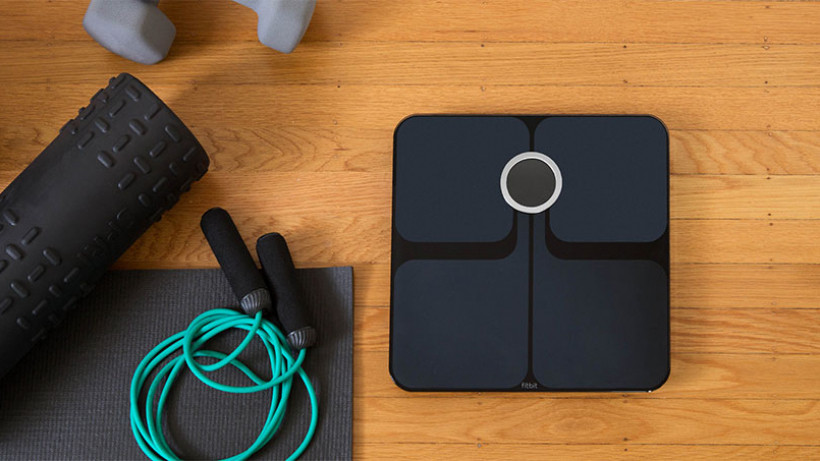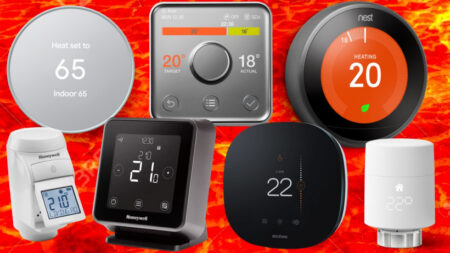We guide you on making the right choice for your bathroom
The bathroom scale is no longer a humble slab of plastic built mercilessly for shaming you. No, these things can now shame you in much smarter ways. Not only can they tell us more about our bodies than ever before, but, with the help of our smartphones, they can tell us how our bodies are changing over time. They’ve truly earned their place in the smart home.
In 2019, scales can tell us about our bone density, some can tell us when we’ve hit a personal goal, and some will even wish you a happy birthday – but all should be able to perform the basic task of helping us track our weight.
Read this: The top bathroom tech trends
We’ve rounded up some of the latest smart scales and put them to the test. We stood on them, sat on them; we piled on a bunch of calories and then stood on them some more. Basically, we’ve done our best to determine what makes these scales “smart”, and which one is best for you.
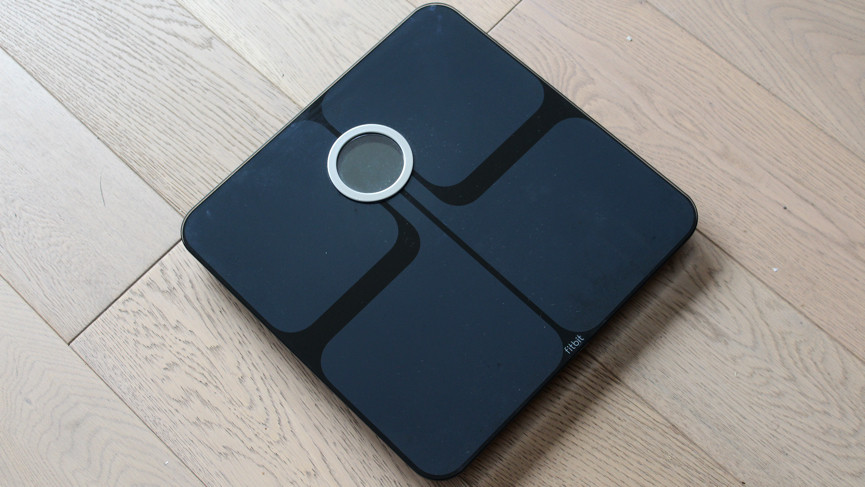
Fitbit Aria 2
£119.95, Amazon | fitbit.com
Back for a second effort with the Aria 2, Fitbit has now firmly cemented itself as one of the most reliable players in this market. Like the original, eight users can register with a single scale, with stats fed back regarding weight, body mass index (BMI), body fat percentage and lean mass.
But what makes this an upgrade? Well, the Aria 2 has been re-engineered with FDA approval in mind, and the company claims it’s more accurate than the previous model. There are also some slight design tweaks – a brighter backlit display and the addition of Bluetooth and Wi-Fi – which makes this a much simpler setup through the Fitbit app, and a fairly painless experience to sync over.
In terms of what’s tracked, it’s a fairly basic package. Once you step onto the glass slab, you’ll have to confirm your ID (with the option to cycle through different profiles, if multiple people use the scale) and then see the data pop up in stages. As we say, this is also fed into the Fitbit dashboard after syncing wirelessly with your smartphone, allowing you to view trends over time and stay on track with customisable weight loss/gain goals.
Considering these are all standard features, the biggest upshot of selecting the Aria 2 is really the wider ecosystem. If you’re a Fitbit wearer, then everything is going to the same place, and you can fill this out even more by inputting your water and calorie intake. After a few weeks, the graphs inside the app will make for useful reading and provide a bit of a motivating edge – especially when you can share your results and compete against friends.
As far as battery life goes, this is a pretty similar deal to what you’ll find with something like the Polar. You’ll need to lock some batteries into the back, and Fitbit notes that this should tide you over for around a year – something we expect is affected if the scale is taking consistent readings from a busier house.
Feature check: Eight user profiles, weight, BMI, body fat percentage, lean mass.

Eufy BodySense
£39.99, Amazon | eufylife.com
The BodySense Smart Scale from Eufy is clear about one thing: it wants to offer a no-frills weight tracking solution that doesn’t break the bank. On that count, it definitely succeeds. The BodySense is easily the most affordable smart scale option we’ve tested.
Powered by four AAA batteries, the BodySense supports up to 20 accounts, so you won’t have to worry about sharing this with family members. However, you will have to switch between the accounts before you step onto the scale via the Eufy Life companion app, which can be a small annoyance.
As for the tracking, you’re getting 12 different measurements: weight, body mass index, body fat percentage, water, muscle, bone, basal metabolic rate, visceral fat, lean body mass, bone mass and muscle mass. In our tests, we found the weight to be highly accurate – the BodySense does use two pairs of sensitive sensors that were listed by the FDA.
The other metrics were a little more difficult to gauge, but at the very least they do provide for a good look at your progress over time. Speaking of progress, the Eufy Life app won’t let you set a goal or even congratulate you on milestones (rude!). It simply keeps track and plots everything onto a graph, though it will let you know whether your metrics are healthy for your age, height and gender.
Easy colour coding will tell you whether you’re normal, low, high or excessive in each metric. It’ll also tell you where you need to be to be in a healthy zone. For those who aren’t into being hit with notifications every time we do something with a health-based app, it’s refreshingly freeing.
Finally, the BodySense comes with both Apple Health and Google Fit support, so you can share your weigh-ins with the rest of your health ecosystem.
Note: The BodySense is no longer on the Eufy website. It’s still available to buy on Amazon, though the Eufy Smart Scale has now replaced this model – our testing will take place in due course.
Feature check: 20 user profiles, weight, BMI, body fat percentage, basal metabolic rate, bone mass, muscle mass.
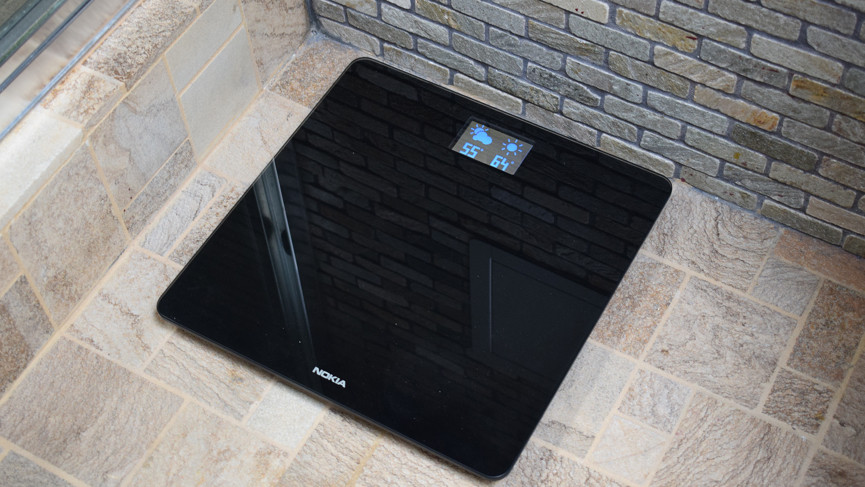
Withings Body
£49.95, Amazon | withings.com
Ok, first things first. That’s clearly Nokia’s name emblazoned on our scale in the image above. That’s because since originally testing the scale, the Nokia company formerly known as Withings has, well, becomes Withings again. If you bought this scale as the Nokia Body, fear not, as Withings tells us it will continue to support those scales with future updates.
The Withings Body isn’t the most feature-rich of the company’s smart scale range – for that you’ll want the Body Cardio or Body+ – but as it’s the most affordable of the family, it’s the one a lot of people will undoubtedly be interested in. Good news, then, as it does a decent job.
The Withings Body measures 32.7cm x 32.7cm x 2.3cm and is covered in a high-tempered glass, with black or white options available. At the top is a small but bright LED screen that’ll display your weight, BMI and other information such as the day’s weather forecast. As for the metrics, those are actually the main ones – weight and BMI – but it also has a pregnancy tracker in there, should that be useful to you. If you opt for the pricier Body+ you’ll get more body composition analysis such as muscle and bone mass. Or you can go for the top-of-the-line model, the Withings Body Cardio, which also tracks your standing heart rate.
Setup is relatively painless, although it took us a couple of attempts to get it connected to the home Wi-FI, something you’ll need the smartphone app to do. The scale runs on four AAA batteries that should last around 18 months. However, if there are ever any problem syncing your weigh-ins, the Body scale can store up to 16 readings in its memory.
This thing has automatic user recognition (it detects by weight) and can support up to eight different profiles. The Health Mate app is as simple to use as the scales, plotting your progress on easy-to-read graphs and letting you set goals. If you’re using other Nokia/Withings devices, the information from those will be fed into the same app to give those weigh-ins a little more context.
Similarly, you can have your steps displayed on the Body during a reading if you’re wearing a Withings smartwatch. Oh, and there’s integration with other services too, so you can have updates sent to your Google Fit or Fitbit apps, for example.
Feature check: 8 user profiles, weight, BMI, pregnancy tracker.
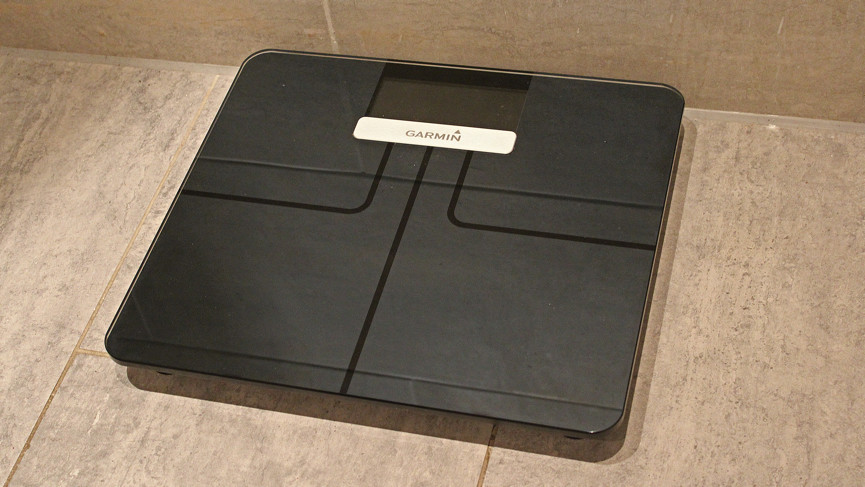
Garmin Index
£149.99, Amazon | garmin.com
You may think of Garmin as fully focused on running watches and other trackers, but its Index smart scale is also available to keep a tab on your weight. You get more than the standard look at your pounds, obviously – body mass index, body fat percentage, body water percentage, skeletal muscle mass and bone mass are all included.
The upside to that is that the Index unlocks more raw data than almost all of its rivals, though it’s unfortunately spoiled somewhat by how it’s presented in the Garmin Connect app. You can get a look of your weight data from the current day in the My Day section of the app, but things get pretty messy if you’re looking to compare it to previous data. You’ll have to trawl through the Calendar, and it can be tough to actually find graphs that make it easier to see how you’re progressing (or faltering) over a wider period of time.
Unfortunately, this isn’t the only area where the Index comes up short against other scales. While the design is relatively harmless in the wider context of a bathroom, it’s still on the bigger side, sitting at 35cm x 31cm x 3cm, and we’ve also had our fair share of issues with the stability of the four plastic legs propping it up. It’s not cheap, either, compared to the likes of Fitbit and Polar – something which is compounded by the fact the Index is now roughly three years into its life.
Battery life rests at roughly nine months, Garmin says, thanks to the four AA batteries you’ll slide into the back, and up to 16 profiles can be created for the scale (though, as is also the case with other scales, we suspect you’ll only need this many if you live in a hostel or are taking part in some sort of strange family reunion weigh-in).
Feature check: 16 user profiles, weight, BMI, body fat percentage, body water percentage, skeletal muscle mass, bone mass, Wi-Fi.
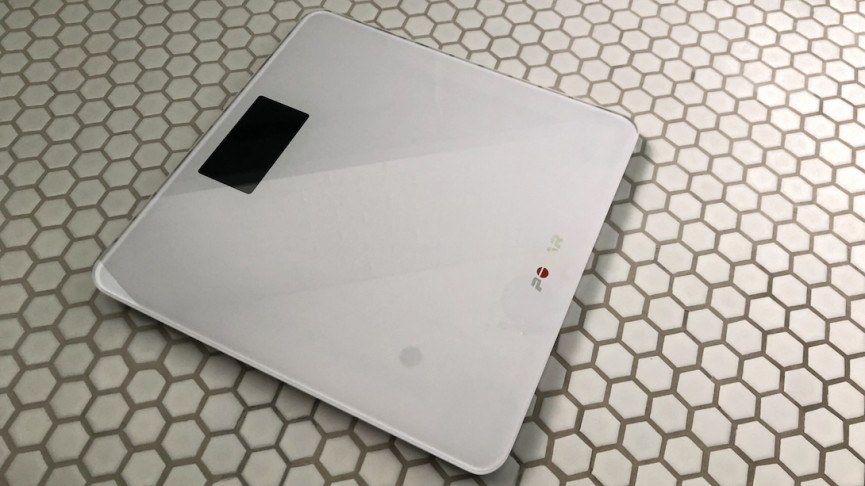
Polar Balance
Polar’s Balance is super slim; jump aboard and it’s like standing on a piece of glass. Actually, that’s literally the case – a piece of splash-proof glass is held up by four, small, rubber feet in each corner. The glass, measuring less than a centimetre thick, houses a monochrome display where big, easy to read numbers show up. (How big those numbers are depends on how many cakes you’ve been eating.)
It shows lbs or kgs. No stones for you Brits, so you’ll have to do the maths. You change the unit using a button on the back. That’s it – there’s no BMI measuring with the Balance.
You can get BMI data though, once you get your reading onto the Polar Flow platform. With Flow you’ll get a BMI score based on your personal info, your weight and Polar’s algorithms. However getting data onto Polar Flow is a bit more fiddly than it needs to be.
The Polar Balance syncs to a Polar wrist-based device such as the Loop, V800 or M400 using Bluetooth – there’s no Wi-Fi on board here, like the Fitbit. That’s obviously a bit annoying if, like me, you tend to weigh yourself in the morning before you jump in the shower – a place and time where you don’t necessarily wear a running watch or fitness tracker. In turn, you then sync your Polar wearable of choice with the Polar Flow smartphone app, which eventually pings the reading up to the cloud.
That’s where the fun starts. Polar Flow will present its Weight Loss Speedometer user interface, where you choose a target weight and get a visual of how you’re doing. You’ll also be given a daily activity goal, as well as how many calories less you need to consume to help reach your target.
Powered by 3 AAA batteries, we’re told that you’ll get a year’s worth of Balance life from them, based on four readings a day. That might seem excessive, but the Balance does support pairing with up to 10 wearables, so a number of people in one house could make use of it without killing the power too quickly.
Feature check: 10 user profiles, weight, BMI, Bluetooth only (no Wi-Fi).


